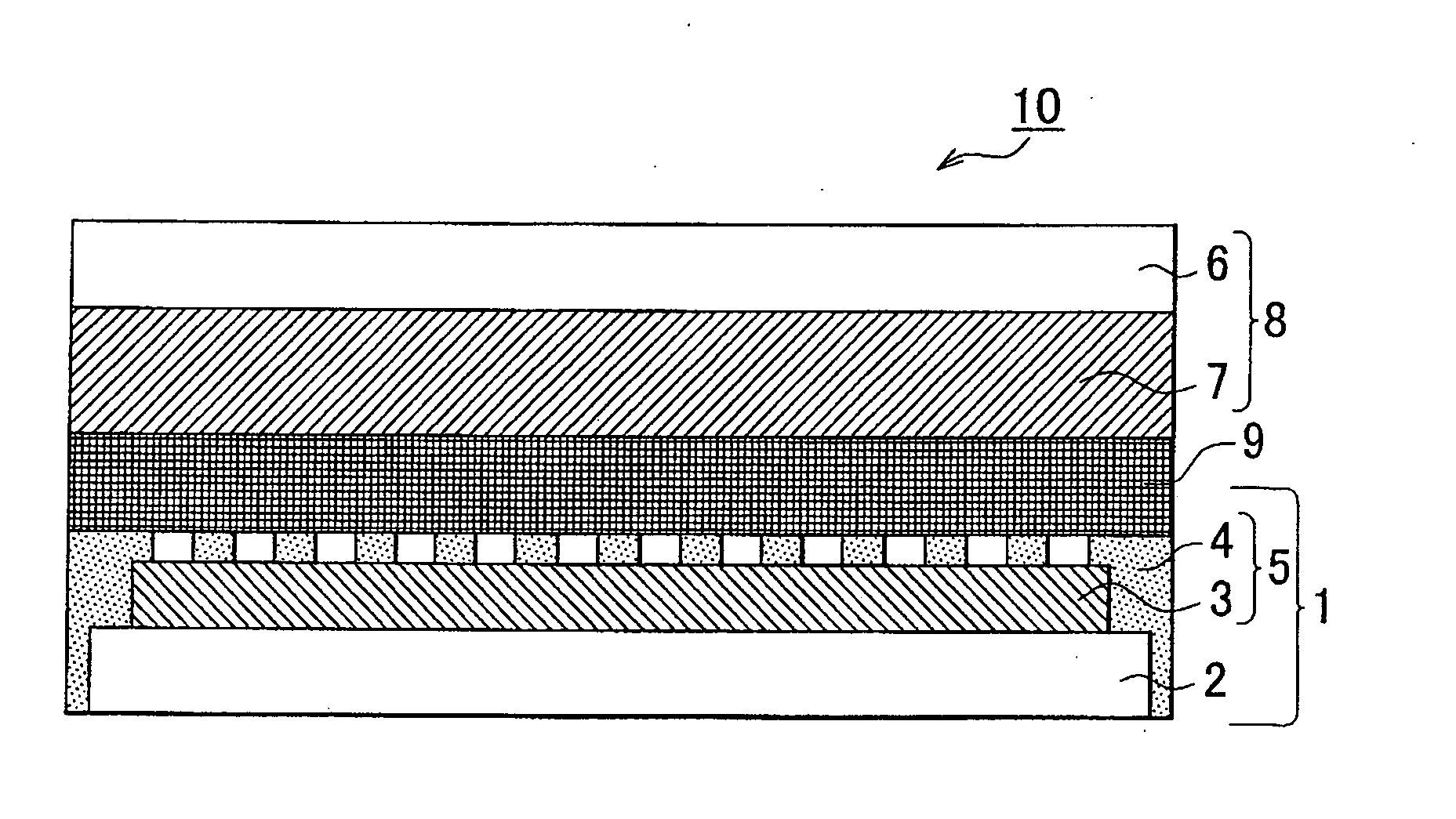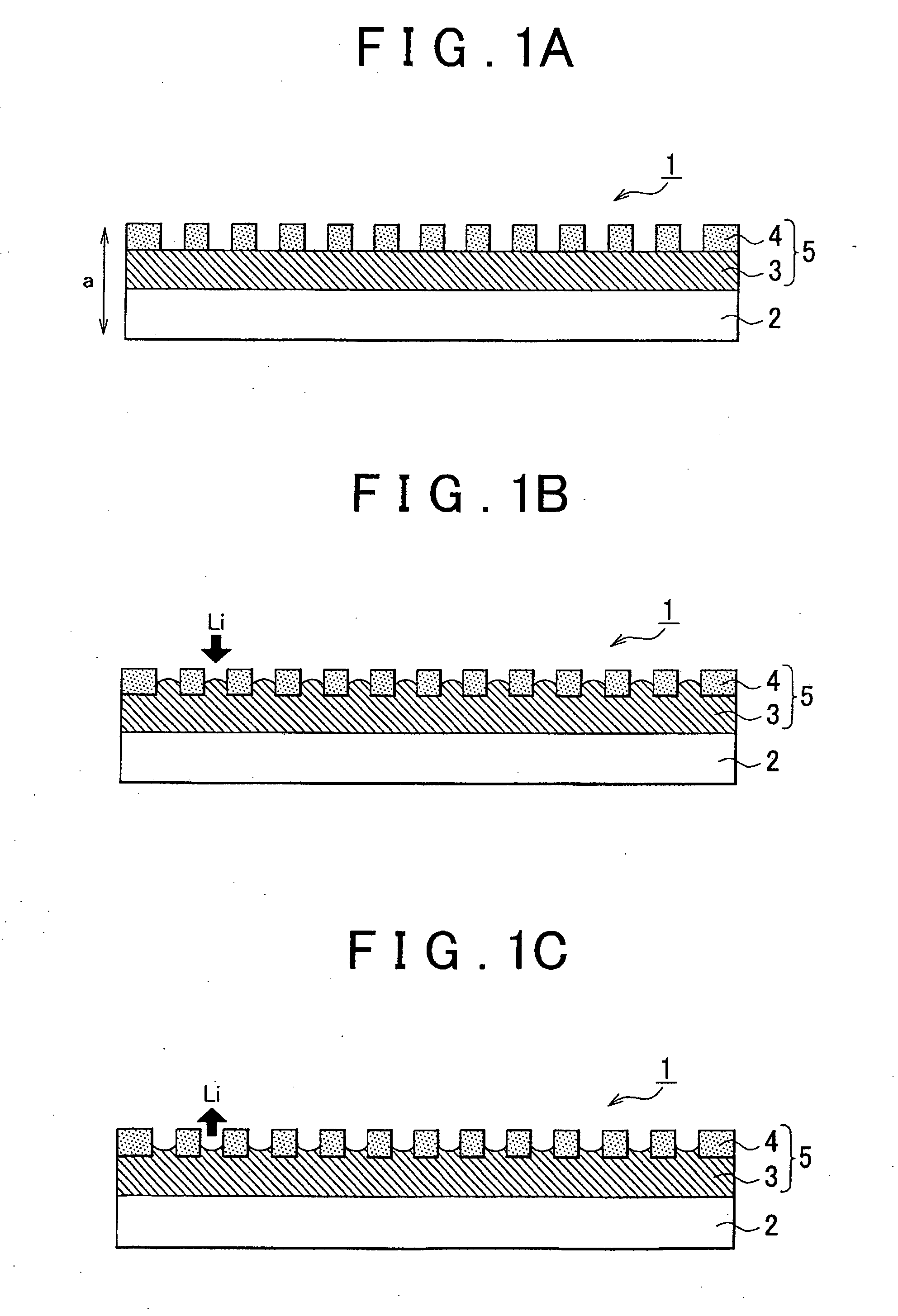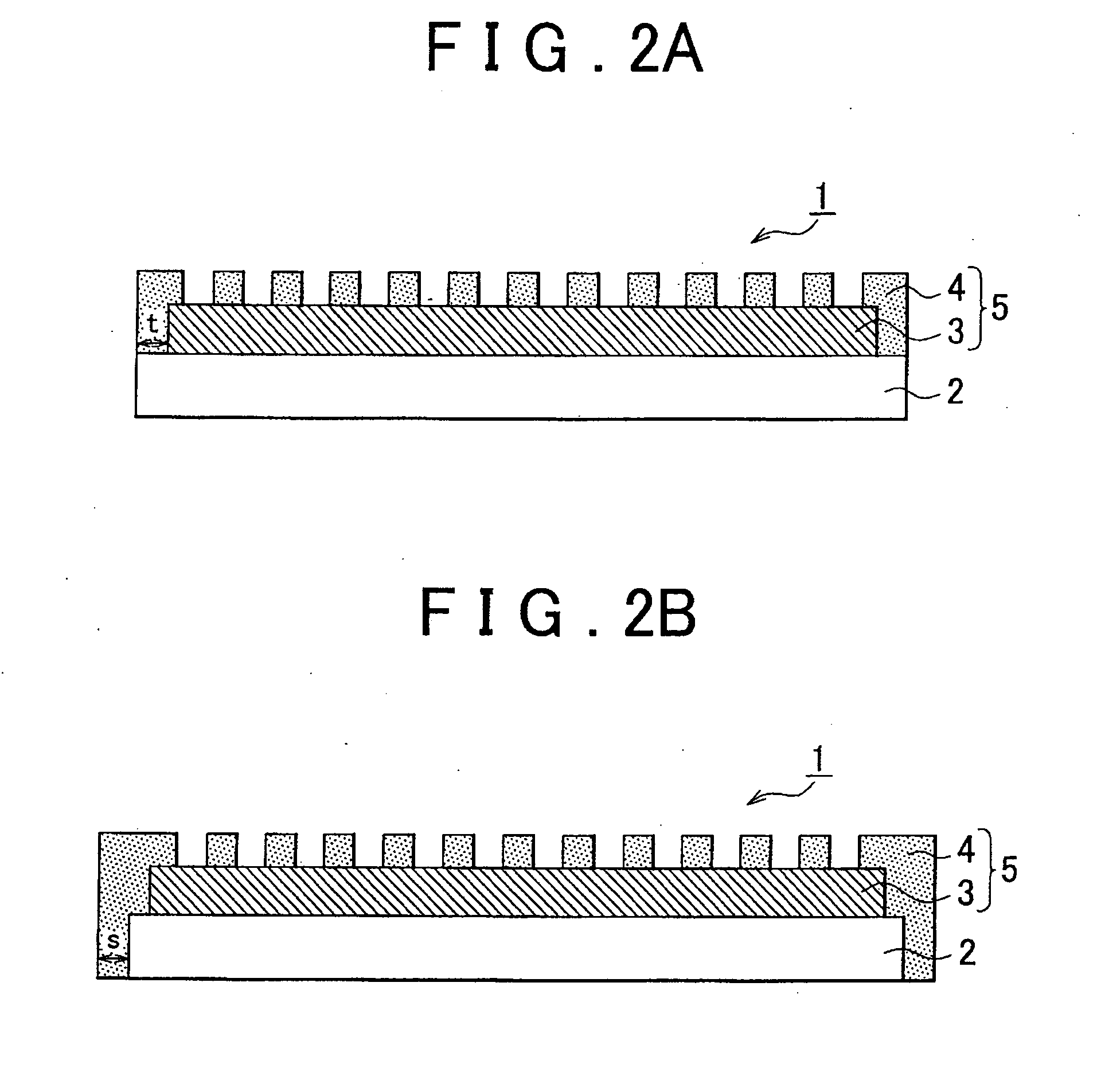Negative electrode element for lithium-ion secondary battery, lithium-ion secondary battery and method of manufacturing the same
a secondary battery and negative electrode technology, applied in the direction of cell components, final product manufacturing, sustainable manufacturing/processing, etc., can solve the problems of reduced stress due to volume variation, reduced cycle characteristics, and reduced stress due to a variation in volume, so as to prevent the shape of the alloying active material layer, reduce adverse effects, and prevent peeling or slip
- Summary
- Abstract
- Description
- Claims
- Application Information
AI Technical Summary
Benefits of technology
Problems solved by technology
Method used
Image
Examples
Embodiment Construction
[0033]An embodiment of the invention provides a negative electrode element for a lithium-ion secondary battery, a lithium-ion secondary battery that uses the negative electrode element, and a method of manufacturing a lithium-ion secondary battery. Hereinafter, these will be described in detail.
[0034]According to the embodiment of the invention, a negative electrode element for a lithium-ion secondary battery includes: a negative electrode current collector; and a negative electrode layer that includes an alloying active material layer and a resin layer, wherein the alloying active material layer is formed on the negative electrode current collector, wherein the resin layer is formed on a surface of the alloying active material layer so as to have an opening that exposes part of the alloying active material layer to a surface of the negative electrode layer, wherein the surface of the alloying active material layer, exposed to the opening, and a surface of the resin layer form a ste...
PUM
| Property | Measurement | Unit |
|---|---|---|
| size | aaaaa | aaaaa |
| size | aaaaa | aaaaa |
| particle diameter | aaaaa | aaaaa |
Abstract
Description
Claims
Application Information
 Login to View More
Login to View More - R&D
- Intellectual Property
- Life Sciences
- Materials
- Tech Scout
- Unparalleled Data Quality
- Higher Quality Content
- 60% Fewer Hallucinations
Browse by: Latest US Patents, China's latest patents, Technical Efficacy Thesaurus, Application Domain, Technology Topic, Popular Technical Reports.
© 2025 PatSnap. All rights reserved.Legal|Privacy policy|Modern Slavery Act Transparency Statement|Sitemap|About US| Contact US: help@patsnap.com



